In Vietnam, David and I booked a tour where we would go to a market, buy some food, and go to a cooking school to cook our own lunches. Our guide was a woman in her mid-forties, which meant she was a small child in 1975, when reunification (the Vietnamese term for the fall of Saigon and the end of the war) happened. She mentioned many times how hard the years just after reunification were for people, particularly those in the South, but said that things are getting much better now. The government provides medical care and milk and vitamins for pregnant women and small children, so the people are getting larger and healthier. That did seem to be true from what I could see: the younger people were much taller than the old people in general, although still short by our standards.
The roads were pretty bad until we got to a main highway. The guide told us that construction was being done and hopefully the next time we come the roads will be better. One thing that I could not help noticing was the number of motorcycles (or scooters – David says they were not real motorcycles, but I took pictures, so you judge) on the roads.
The guide explained that cars are just too expensive; while a motorcycle can be had for less than a thousand dollars, a used car could cost ten thousand or more, which is much more than most people make in a year. We drove into HoChiMinh City (Saigon) and the guide had us stop first at a "happy house" (toilets) with a handicraft factory/shop attached. This was the only shopping on the trip, which upset a few of the women, who apparently read “visit to market” to mean shopping.
After the potty break we went to a central market, where a chef from the cooking school met us and took us on a tour around the market. We saw many familiar vegetables and fruits, and even more strange ones. The chef explained some of the unfamiliar produce. After the fruits and vegetables, we went to the fish area, where people were still cleaning the catch and there were dozens of varieties of fish and seafood on ice and in big bowls of water.
The chef bought a couple of kilos of snake head fish for our lunch. Fortunately she had given us an orientation about how the market was organized, so no one got lost getting out (a distinct possibility, given the size of the market).
We boarded the bus and proceeded to the cooking school. (This was the point where several ladies realized there was not going to be any shopping on this tour and tried to negotiate some time for shopping. They were voted down by the rest of us; many people told them they should have read the description of the tour more closely. The guide was wavering but realized the majority wanted to have the tour as described, so the shopping ladies were out of luck.)
At the cooking school, they greeted us and showed us the table with ingredients already laid out for us. The idea was for us to prepare the correct number of plates for vegetable spring rolls; the chef showed us how much of each ingredient to place on each plate, and we set up an assembly line to prepare the plates. Our ship baby-sitter, Lisa, is vegetarian, so they prepared a special plate (no pork or shrimp) for her.
After we had prepared the plates, and they had put plastic wrap over the prepared plates, one of the instructor/chefs gave us a talk on the Vietnamese pots and utensils. They use clay pots for most of their cooking. Different cooking types use different shapes and sizes, but all the pots were small by our standards. It turned out not to matter, because we prepared individual meals. After the talk on pots and utensils, they showed us into the classroom, where several tables were prepared with two gas burners and several bowls of spices and herbs, and bottles of vinegar and nuc mam (anchovy sauce). The chef was at the front of the room with a mirror placed so that we could all see what she was doing. We first prepared a dipping sauce using the nuc mam, vinegar and some garlic and herbs. Then we started on the vegetable rolls. Step by step, she showed us how to wet the wrappers and measure the correct placement of the ingredients. We followed her instructions, and we each made three rolls.
Next we followed the chef in making a sweet and sour fish soup using the snakehead fish that was bought at the market (chopped into large pieces by elves in the kitchen), some tomatoes, chicken broth and other delicious ingredients (they gave us the recipe to take home with us). Finally we prepared the braised chicken, and had a full meal with more food than most of us could eat, which surprised us given the guide's previous talks about lack of food. It was all delicious, so I’m glad we have the recipes and instructions to prepare these things at home. (I don’t have the bamboo form we used to measure the correct placement for the wraps, however.)
The school has two kinds of diplomas: a red one for successful completion, and a green one that says you get a free class “to try again due to your dismal failure.” Fortunately, we all passed. The leader gave us a choice of individual examinations at the end or a group test. Of course we all chose the group test. It was a real test, too, with questions about what we had been taught. The advantage of the group test is that if even one person remembers, all get credit. Do you suppose that was a subtle lesson in collectivism?
When we got back to the ship we found a small market going strong, so the day wasn’t completely lost for the shoppers. David and I even did a little shopping. I bought a head scarf for the upcoming Middle East, and he bought a shirt.
Cooking in Saigon (HoChiMinh City)
Friday, March 11, 2011
 Phu My Vietnam, Quang Nam, Vietnam
Phu My Vietnam, Quang Nam, Vietnam
Other Entries
-
24Wellington -- Following Frodo's Footsteps
Feb 1029 days prior Wellington, New Zealandphoto_camera19videocam 0comment 1
Wellington, New Zealandphoto_camera19videocam 0comment 1 -
25Christchurch -- A bit of England in New Zealand
Feb 1128 days prior Christchurch, New Zealandphoto_camera19videocam 0comment 0
Christchurch, New Zealandphoto_camera19videocam 0comment 0 -
26Dunedin and the Yellow-Eyed Penguin Reserve
Feb 1227 days prior Dunedin, New Zealandphoto_camera22videocam 0comment 2
Dunedin, New Zealandphoto_camera22videocam 0comment 2 -
27Stewart Island: the Far South
Feb 1326 days prior Oban New Zealand, New Zealandphoto_camera14videocam 0comment 0
Oban New Zealand, New Zealandphoto_camera14videocam 0comment 0 -
28Magnificent Scenic Cruising in Fiordland
Feb 1425 days prior Fiordland, New Zealandphoto_camera16videocam 0comment 2
Fiordland, New Zealandphoto_camera16videocam 0comment 2 -
29Meeting with the Devil
Feb 1722 days prior Hobart, Australiaphoto_camera23videocam 0comment 0
Hobart, Australiaphoto_camera23videocam 0comment 0 -
30Visiting the Prison at Port Arthur
Feb 1821 days prior Port Arthur, Australiaphoto_camera21videocam 0comment 1
Port Arthur, Australiaphoto_camera21videocam 0comment 1 -
31Wow! is all I can say about Sydney
Feb 2019 days prior Sydney, Australiaphoto_camera24videocam 0comment 2
Sydney, Australiaphoto_camera24videocam 0comment 2 -
32Leaving Sydney
Feb 2118 days prior Sydney, Australiaphoto_camera26videocam 0comment 0
Sydney, Australiaphoto_camera26videocam 0comment 0 -
33The Great Barrier Reef
Feb 2415 days prior Cairns, Australiaphoto_camera21videocam 0comment 0
Cairns, Australiaphoto_camera21videocam 0comment 0 -
34Papua New Guinea
Feb 2712 days prior Madang, Papua New Guineaphoto_camera22videocam 0comment 0
Madang, Papua New Guineaphoto_camera22videocam 0comment 0 -
35Crossing the Equator
Mar 0110 days prior Madang, Papua New Guineaphoto_camera11videocam 0comment 1
Madang, Papua New Guineaphoto_camera11videocam 0comment 1 -
36Sorry, we didn't go to Koror after all....
Mar 029 days prior Koror, Palauphoto_camera4videocam 0comment 0
Koror, Palauphoto_camera4videocam 0comment 0 -
37The (unexpected) first day in Manila
Mar 047 days prior Manila, Philippinesphoto_camera24videocam 0comment 0
Manila, Philippinesphoto_camera24videocam 0comment 0 -
38The second day in Manila (formerly the first)
Mar 056 days prior Manila, Philippinesphoto_camera4videocam 0comment 0
Manila, Philippinesphoto_camera4videocam 0comment 0 -
39Hong Kong Special Administrative Region
Mar 074 days prior Hong Kong, Chinaphoto_camera20videocam 0comment 1
Hong Kong, Chinaphoto_camera20videocam 0comment 1 -
40Last day in Hong Kong
Mar 083 days prior Hong Kong, Chinaphoto_camera18videocam 0comment 0
Hong Kong, Chinaphoto_camera18videocam 0comment 0 -
41Cooking in Saigon (HoChiMinh City)
Mar 11 Phu My Vietnam, Vietnamphoto_camera28videocam 0comment 1
Phu My Vietnam, Vietnamphoto_camera28videocam 0comment 1 -
42Tea and Raffles Hotel
Mar 132 days later Singapore, Singaporephoto_camera22videocam 0comment 0
Singapore, Singaporephoto_camera22videocam 0comment 0 -
43Wild times at the Bird Park!
Mar 143 days later Singapore, Singaporephoto_camera35videocam 0comment 0
Singapore, Singaporephoto_camera35videocam 0comment 0 -
44Kochi, province of Kerala (Land of Coconuts)
Mar 187 days later Kochi, Indiaphoto_camera22videocam 0comment 0
Kochi, Indiaphoto_camera22videocam 0comment 0 -
45Magnificent Mumbai, Heartbeat of India
Mar 209 days later Mumbai, Indiaphoto_camera14videocam 0comment 1
Mumbai, Indiaphoto_camera14videocam 0comment 1 -
46Fun and games in Bombay (Mumbai)
Mar 2110 days later Mumbai, Indiaphoto_camera15videocam 0comment 1
Mumbai, Indiaphoto_camera15videocam 0comment 1 -
47The Natural History of Sharjah
Mar 2413 days later Dubai, United Arab Emiratesphoto_camera21videocam 0comment 0
Dubai, United Arab Emiratesphoto_camera21videocam 0comment 0 -
48Superlative Dubai
Mar 2514 days later Dubai, United Arab Emiratesphoto_camera15videocam 0comment 0
Dubai, United Arab Emiratesphoto_camera15videocam 0comment 0 -
49Trading the Amsterdam for a Dhow
Mar 2615 days later Muscat, Omanphoto_camera14videocam 0comment 0
Muscat, Omanphoto_camera14videocam 0comment 0 -
50Checking out Job's Tomb
Mar 2716 days later Salalah, Omanphoto_camera18videocam 0comment 0
Salalah, Omanphoto_camera18videocam 0comment 0 -
51Luxor after All!
Apr 0222 days later Safaga, Egyptphoto_camera21videocam 0comment 1
Safaga, Egyptphoto_camera21videocam 0comment 1 -
52Petra, the Rose City
Apr 0323 days later Aqaba, Jordanphoto_camera20videocam 0comment 0
Aqaba, Jordanphoto_camera20videocam 0comment 0 -
53Transiting the Suez Canal
Apr 0525 days later Suez, Egyptphoto_camera15videocam 0comment 0
Suez, Egyptphoto_camera15videocam 0comment 0 -
54Following ancient footsteps
Apr 0626 days later Ashdod, Israelphoto_camera22videocam 0comment 0
Ashdod, Israelphoto_camera22videocam 0comment 0 -
55Experiencing Ephesus
Apr 0828 days later Kusadasi, Turkeyphoto_camera19videocam 0comment 1
Kusadasi, Turkeyphoto_camera19videocam 0comment 1 -
56Seeing Kusadasi
Apr 0929 days later Kusadasi, Turkeyphoto_camera14videocam 0comment 0
Kusadasi, Turkeyphoto_camera14videocam 0comment 0 -
57Apr 12, 2011
Apr 1232 days later Naples, Italyphoto_camera18videocam 0comment 0
Naples, Italyphoto_camera18videocam 0comment 0 -
58Apr 13, 2011
Apr 1333 days later Naples, Italyphoto_camera12videocam 0comment 0
Naples, Italyphoto_camera12videocam 0comment 0 -
59Apr 14, 2011
Apr 1434 days later Civitavecchia, Italyphoto_camera25videocam 0comment 0
Civitavecchia, Italyphoto_camera25videocam 0comment 0
Comments
2025-05-22
Comment code: Ask author if the code is blank

 Phu My Vietnam, Quang Nam, Vietnam
Phu My Vietnam, Quang Nam, Vietnam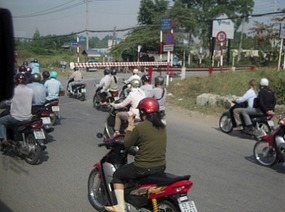
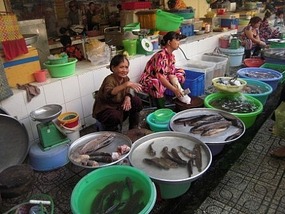

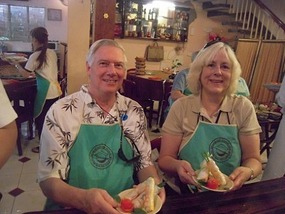
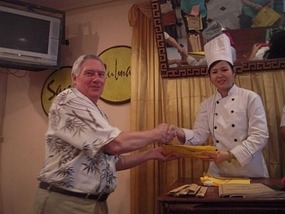
















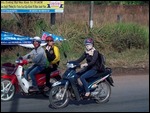
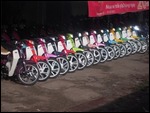
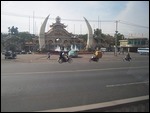
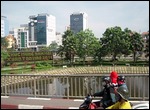
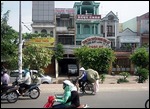
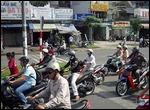
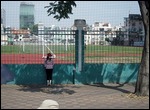
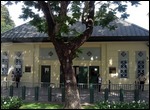
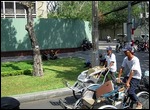
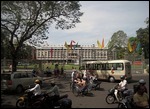
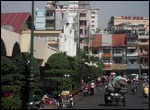
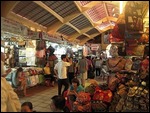
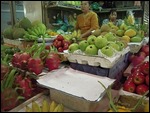
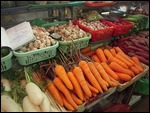
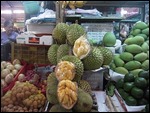
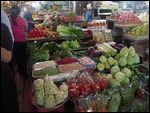
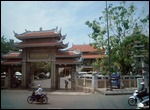

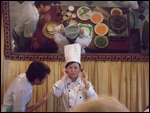
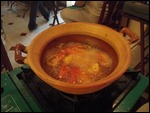
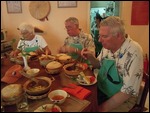
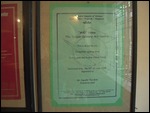
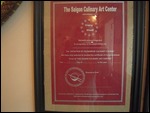
Barb
2011-03-31
I think the cooking class was a wonderful adventure for both of you. It looks like it was really fun.